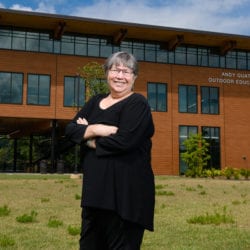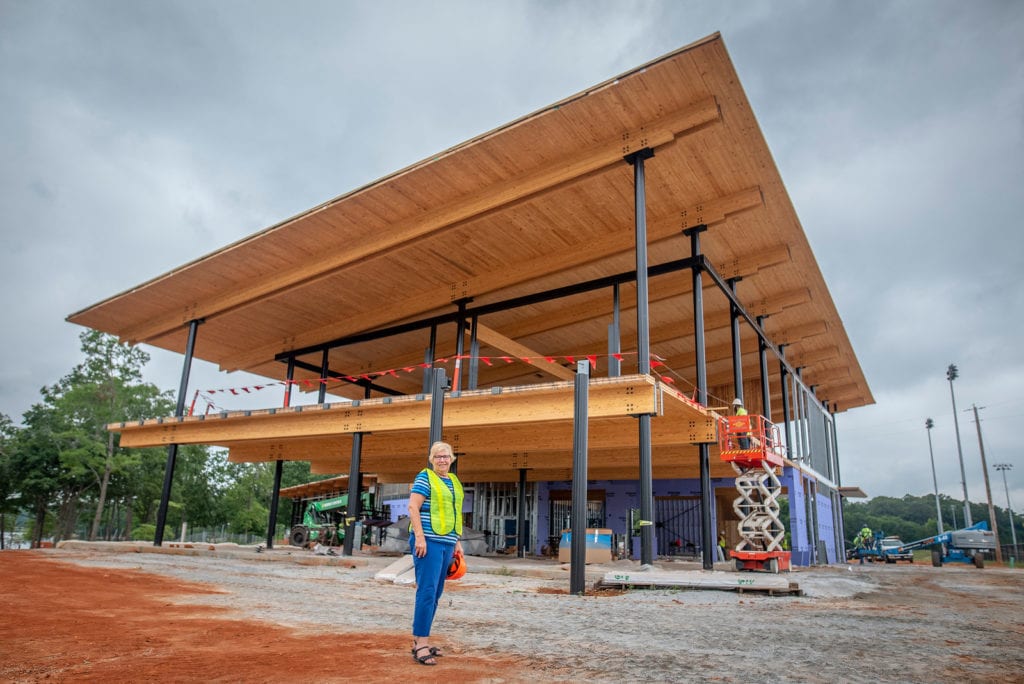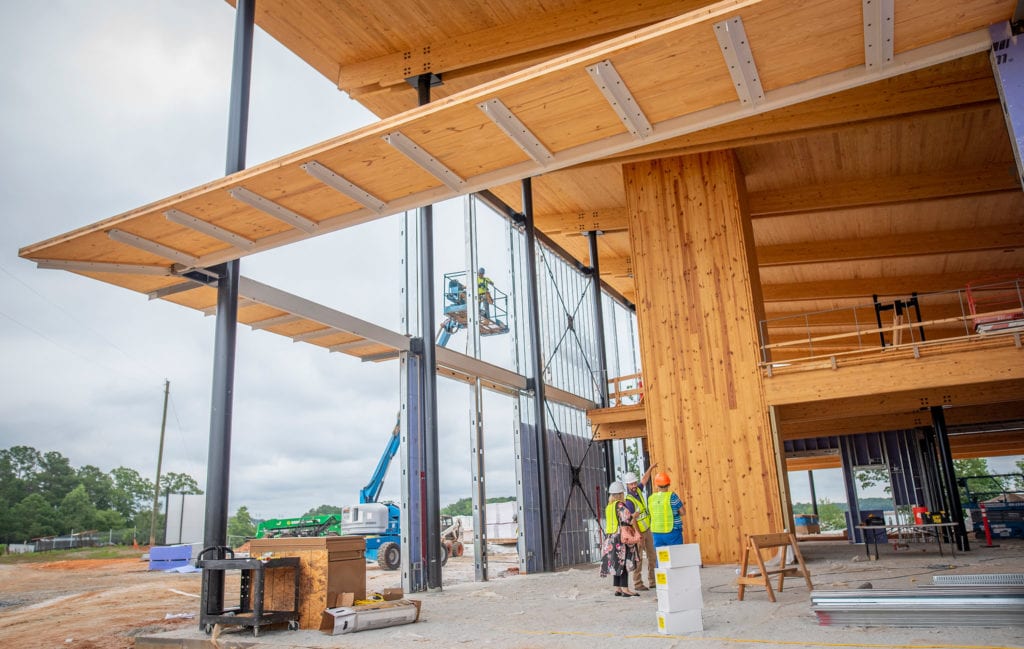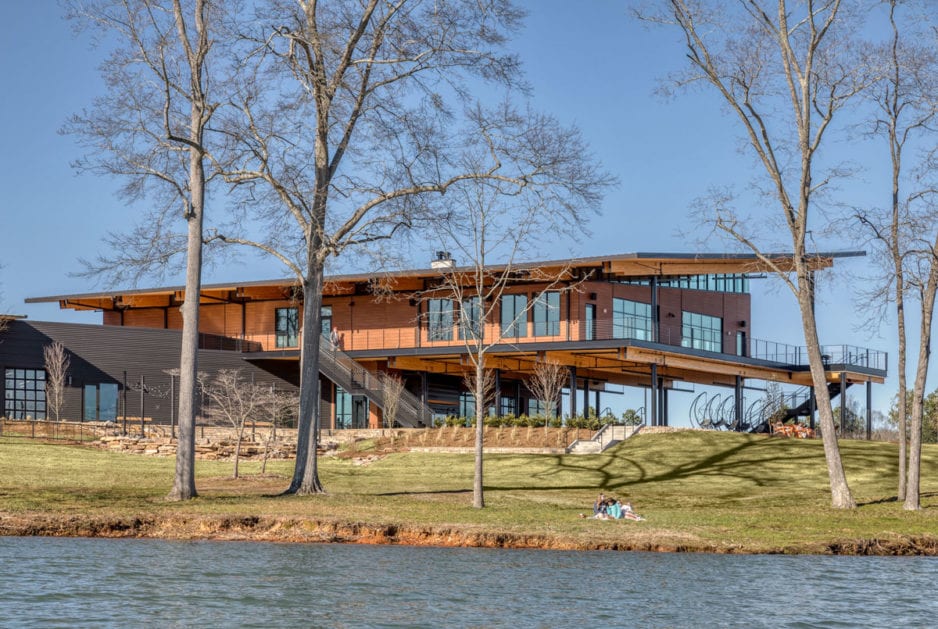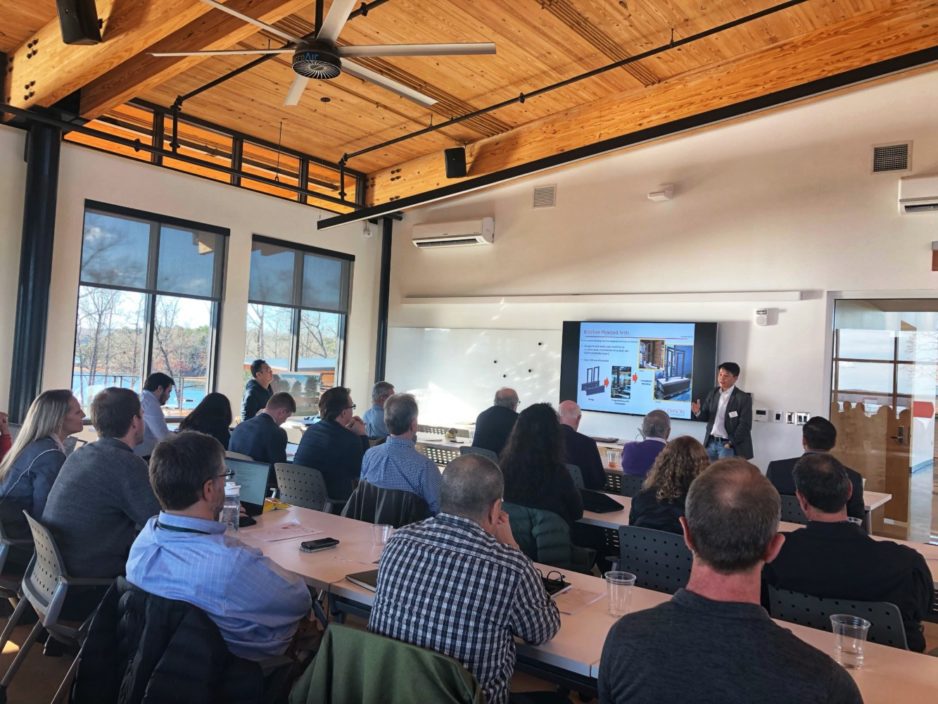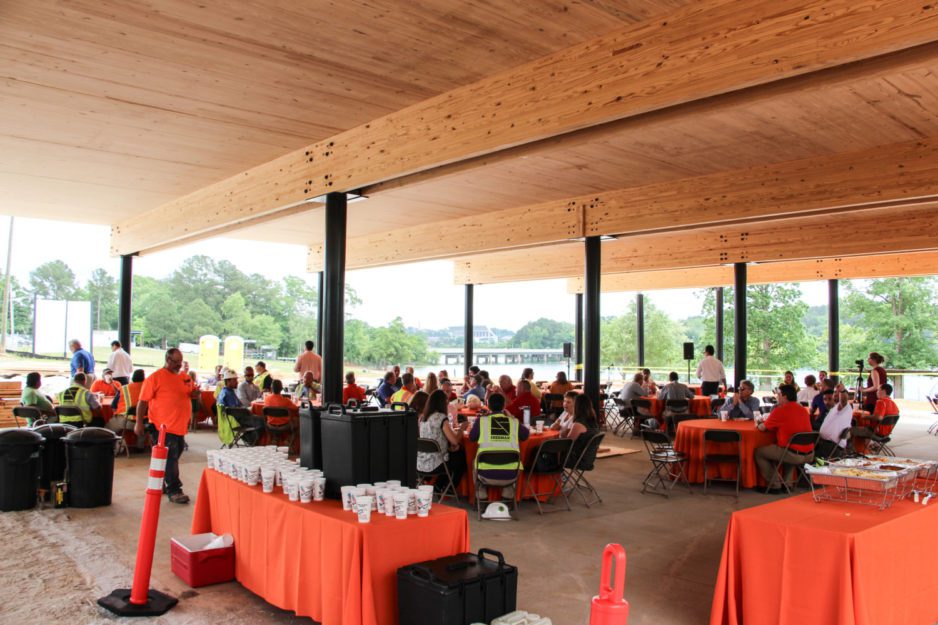Bio
With a background in forest management and forest genetics, Layton examines carbon sequestration and the environmental impact of forests, forest conservation and tree farming as well as the application of mass timber construction and utilization of Southern yellow pine cross-laminated timber (CLT) for increased carbon sequestration.
Layton spends less time in the laboratory and more time as an educator and spokesperson for using wood. She has been funded by the United States Forest Service and others to increase the use of wood in nonresidential buildings. Her expertise helps create wood utilization policies and building codes along with administrative information for landowners and foresters. In collaboration with Clemson University faculty members across different disciplines, students and industry partners, Layton explores new applications for mass timber construction such as noise barriers along highways in place of precast concrete and quick-to-assemble buildings in disaster areas where shelters, clinics or housing is needed. The Integrated Housing Design and Logistics for Disaster Relief project is being supported by the United States Department of Agriculture through the Forest Products Laboratory and is closely coordinated with Weichiang Pang, professor of civil engineering and intelligent infrastructure, along with his advisees in the Glenn Department of Civil Engineering and associate professor Dustin Albright and his students in the School of Architecture. Both are faculty fellows in the Wood Utilization + Design Institute (WU+D).
Where some professors have scholarly publications, Layton helped found an institute, the Wood Utilization + Design Institute at Clemson University, and create several high-profile mass timber buildings in South Carolina, including the trendsetting Andy Quattlebaum Outdoor Education Center, which students, staff and faculty refer to as “Andy’s.” Hybrid design elements of Andy’s include Southern yellow pine CLT that was tested and developed through Clemson’s Wood Utilization + Design Institute. Since its completion, Andy’s has won several awards, including Best Sports/Entertainment award in ENR Southeast’s 2020 Best Projects and a 2021 Wood Design Awards Regional Excellence Winner.
Other landmark buildings incorporating mass timber include three of the South Carolina Parks, Recreation and Tourism brand department’s welcome centers, Wofford College’s environmental sciences building in Spartanburg, The Continuum in Lake City, Ten Oaks Middle School in Myrtle Beach, the College of Charleston admissions office at Craig Hall, Charles Towne Landing Founders Hall in Charleston and the University of South Carolina-Beaufort at the Hilton Head Island Campus. Clemson University also included mass timber in the newly built Samuel J. Cadden Chapel on Clemson’s main campus.
Before joining the Clemson faculty, Layton spent 25 years working with government programs and in the pulp, paper and wood products industries. She was a senior director with the American Forest & Paper Association where she represented the industry in the area of recycling, life cycle analysis, sustainability and energy. She worked at The Scott Paper Company and previously as a forester, starting her career as a tree improvement specialist. Over her career, she has visited forests on every continent except Antarctica and Australia.
As an internationally recognized expert on mass timber construction, Layton travels to speak about the use of mass timber and expanding the use of wood products in novel projects.

